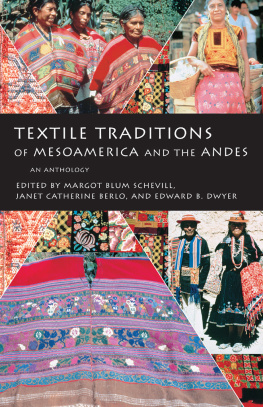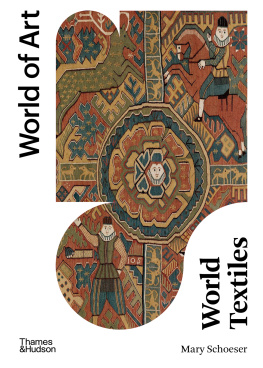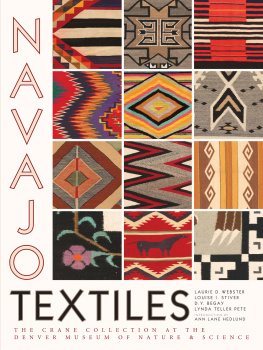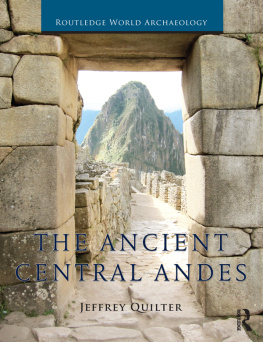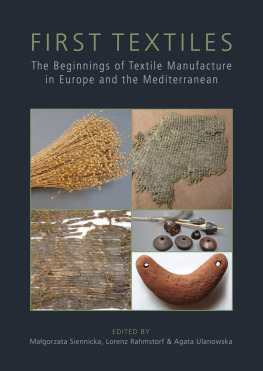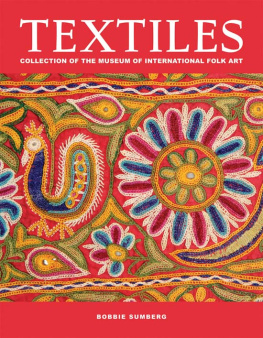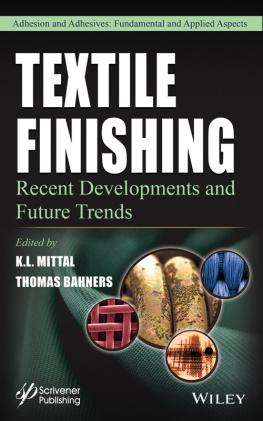
TEXTILE TRADITIONS
OF MESOAMERICA AND THE ANDES:
An Anthology
Edited by
Margot Blum Schevill
Janet Catherine Berlo
Edward B. Dwyer

UNIVERSITY OF TEXAS PRESS
AUSTIN
Copyright 1991 by Margot Blum Schevill, Janet Catherine Berlo, and Edward B. Dwyer
All rights reserved
First University of Texas Press edition, 1996
Requests for permission to reproduce material from this work should be sent to Permissions, University of Texas Press, Box 7819, Austin, TX 78713-7819.
Library of Congress Cataloging-in-Publication Data
Textile traditions of Mesoamerica and the Andes : an anthology / edited by Margot Blum Schevill, Janet Catherine Berlo, Edward B. Dwyer.
p. cm.
Originally published: New York : Garland, 1991.
ISBN 0-292-77714-0 (pbk. : alk. paper)
1. Indian textile fabricsMexico. 2. Indian textile fabricsGuatemala. 3. Indian textile fabricsAndes Region. 4. Indians of MexicoCostume. 5. Indians of Central AmericaCostumeGuatemala. 6. Indians of South AmericaCostumeAndes Region. I. Schevill, Margot. II. Berlo, Janet Catherine. III. Dwyer, Edward Bridgman.
F1219.3.T4T49 1996
746'.089'97dc20
96-10252
ISBN 978-0-292-75916-9 (library e-book)
ISBN 978-0-292-78761-2 (individual e-book)
DOI 10.7560/777149
Contents
Margot Blum Schevill
Sharisse D. McCafferty and Geoffrey G. McCafferty
Cherri M. Pancake
Pamela Scheinman
Guisela Mayn
Carol Hendrickson
Linda Asturias de Barrios
Lynn A. Meisch
Blenda Femenias
Lee Anne Wilson
Raquel Ackerman
Mary Ann Medlin
Ed Franquemont
Virginia Davis
Laura Martin Miller
Robert S. Carlsen and David A. Wenger
Lynn Stephen
Walter F. Morris, Jr.
Janet Catherine Berlo
Illustrations
Chapter 1
Chapter 2
Chapter 3
Chapter 4
Chapter 5
Chapter 6
Chapter 7
Chapter 8
Chapter 9
Chapter 10
Chapter 11
Chapter 12
Chapter 13
Chapter 14
Chapter 15
Chapter 16
Chapter 17
Chapter 18
Preface to the 1996 Edition
The reprint of Textile Traditions of Mesoamerica and the Andes: An Anthology makes available to a larger audience a wide-ranging volume that explores theory and concept, cultural meaning and material culture, as well as specific traditions. The audience includes scholars and students in disciplines such as Latin American studies, art and textile histories, material culture, anthropology, womens studies, and the interested general public. Some articles include uncharted regions on the textile map; others offer information that has not been recorded elsewhere.
Updated biographies of contributors illustrate how scholars have developed ideas presented in this volume over the past decade. A list of additional references covers recent publications in relevant areas. There remains a need for more textile studies in all areas covered by this volume, including:
in-depth fieldwork-based studies like Ackermans work in Abancay, Peru, and Hendricksons study in Tecpn, Guatemala;
ethnohistoric and iconographic studies such as Wilsons essay on colonial and historic textiles in Cuzco, Peru, and McCafferty and McCaffertys essay on late pre-Hispanic Central Mexican textile ideologies;
and broadly synthetic and interpretive studies like Berlos contribution, Beyond Bricolage.
The studies published here fill a gap in the textile literature. Yet they also point out how many more research questions there are to explore. These include the role of indigenous textiles in the world market, transnational and global exchanges through cooperatives and alternate trading organizations, local impact of market expansion, dress and gender, and dress and ethnicity.
Grateful thanks from all contributors for this new edition are due to Theresa May, Assistant Director and Executive Editor of the University of Texas Press.
Margot Blum Schevill,
Janet Catherine Berlo,
Edward B. Dwyer
January 10, 1996
Contributors
Raquel Ackerman received her Ph.D. at Cambridge, England. She is Associate Professor of Anthropology at California State University, Los Angeles. She teaches linguistics and anthropology and continues her research in Peru on political rhetoric.
Linda Asturias de Barrios (Ph.D., State University of New York, Albany) is Director of ESTUDIO 1360, a Guatemalan private organization devoted to social and educational research, and consultant for the Asociacin de Investigacin y Estudios (ASIES) and the Museo Ixchel del Traje Indgena in Guatemala City. Her publications as author, coauthor, and editor include more than fifteen books and articles and two video scripts.
Janet Catherine Berlo is Professor of Art History at the University of MissouriSt. Louis. She has also taught at Yale University and the Rhode Island School of Design. Trained as a historian of pre-Columbian art, Berlo is increasingly interested in womens historic and contemporary arts in the Americas.
Robert S. Carlsen is Research Associate at the University of Colorado Museum in Boulder. He teaches at the University of Denver. He was coauthor with Martin Prechtel of Weaving and Cosmos amongst the Tzutujil Maya in RES. Forthcoming from the University of Texas Press is Bibles, Bullets, and the Venerable Grandchild.
Virginia Davis works with ikat weaving and other resist techniques, both as an internationally exhibited studio artist and from a technical, historical, and ethnographic point of view. She has an M.A. in sociology from the University of Illinois, Urbana. In 1995, as a recipient of a joint National Endowment for the Arts and Fondo Nacional para la Cultura y las Artes award, Davis, working with Dr. Irmgard W. Johnson, researched Mexican stitch-and-tie resist skirts.
Edward B. Dwyer is Associate Provost at the Rhode Island School of Design. He was trained in anthropology at the University of California at Berkeley (Ph.D., 1971) and has done extensive fieldwork, mainly archaeological, in southern Peru. His interests include the development of Early Inca culture in Cuzco, the technical and iconographic analysis of ancient Peruvian textiles, and the relationship of material culture to myth and world-view in specific Peruvian settings.
Blenda Femenias received her Ph.D. in cultural anthropology from the University of Wisconsin-Madison in 1996. From 1982 to 1988 she was Curator of the Helen Allen Textile Collection at the same university. Her research in South America addresses artisanal production of clothing and media images of indigenous people. Femenias dissertation, Ambiguous Emblems, treats the politics of gender and representation through dress in contemporary Peru. She also published the 1987 catalogue Andean Aesthetics: Textiles of Peru and Bolivia.
Ed Franquemont is an anthropologist and a handweaver who has been involved in field studies in the Andes since 1966. He was trained as an archaeologist at Harvard College (B.A., 1967) and has many publications in professional and popular journals. Since 1976, Franquemont has been engaged in a broad-based and long-term study of the Inca weavers of Chinchero, Peru, and their products. He regularly lectures and conducts workshops about Andean weaving across the United States and has served as a consultant for several museums.
Next page
